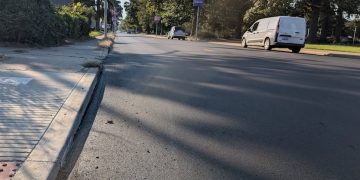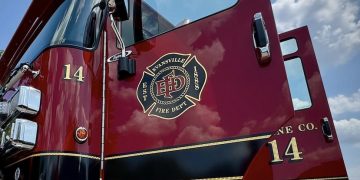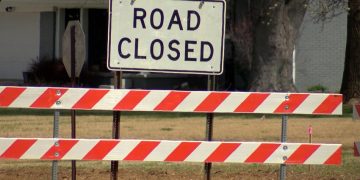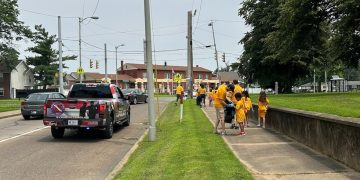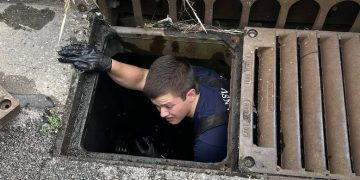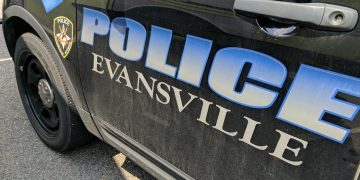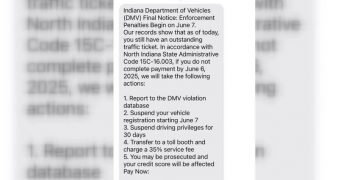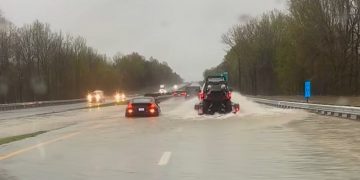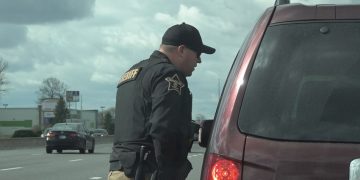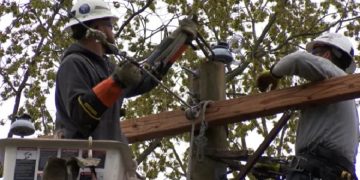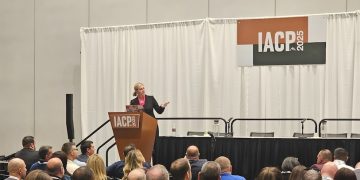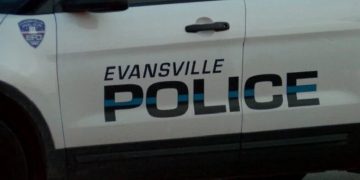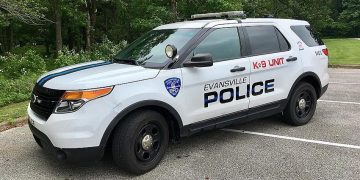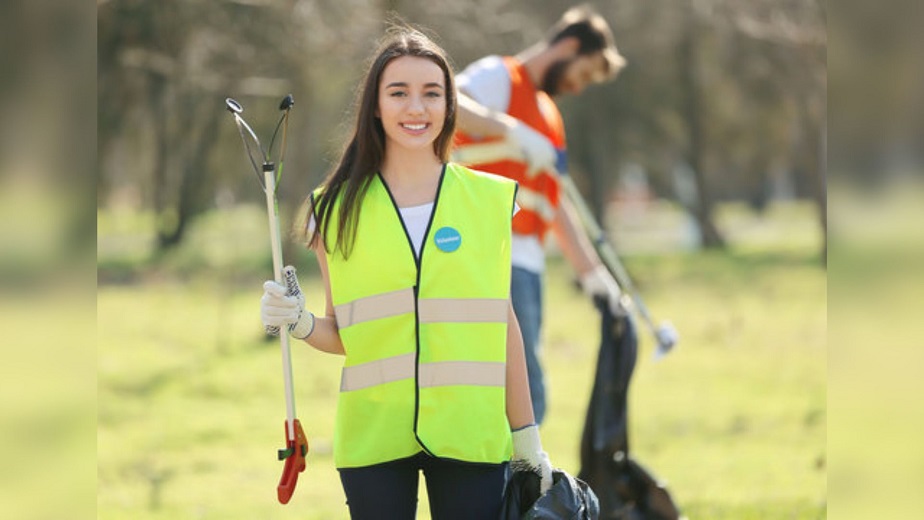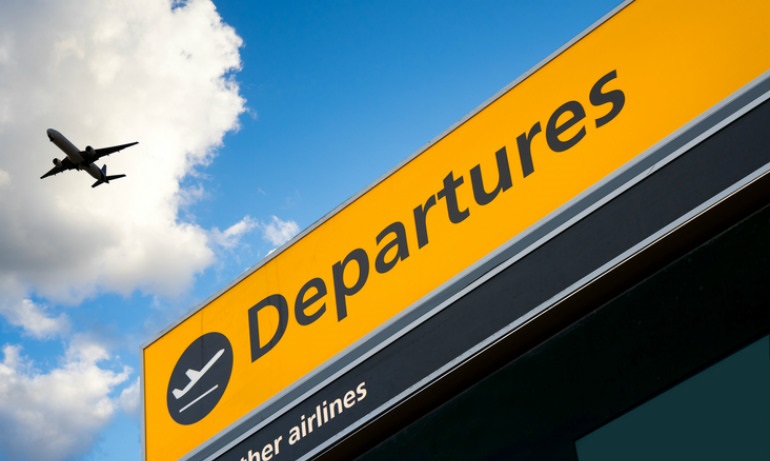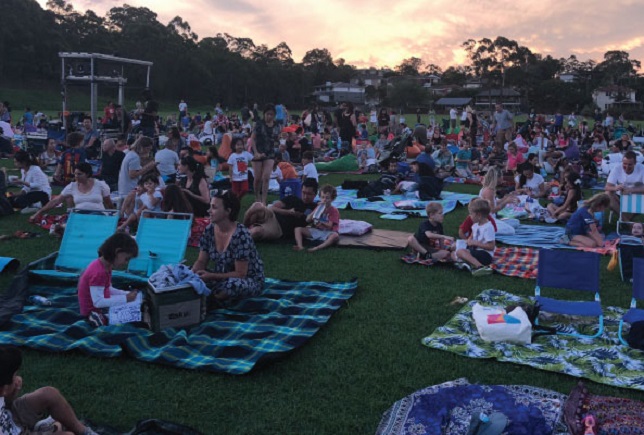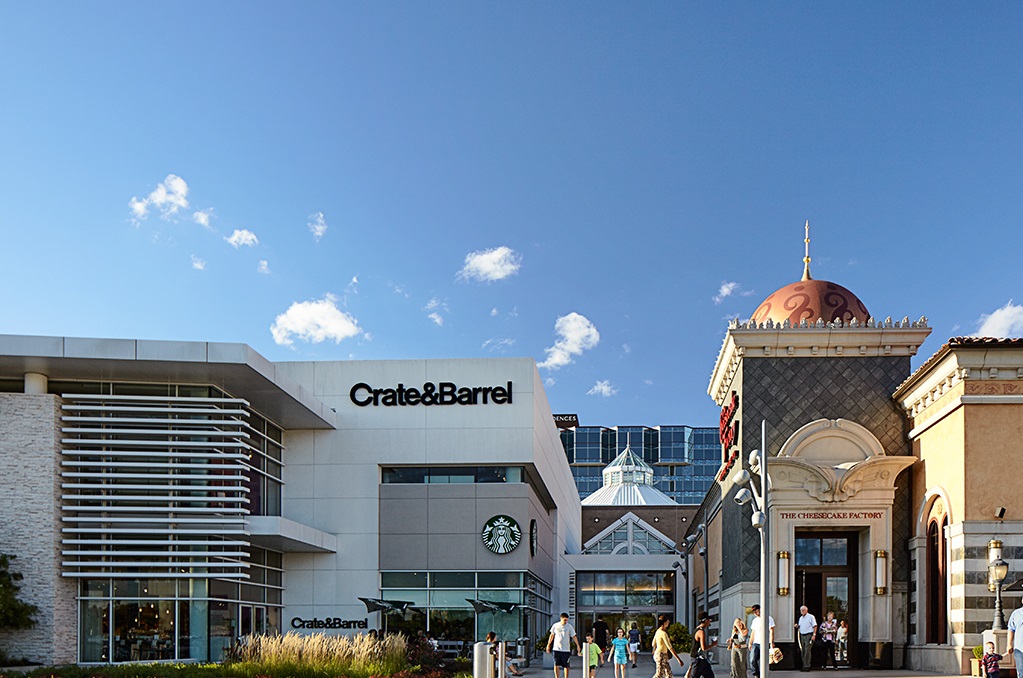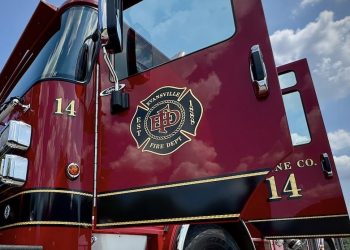Bloomington, Indiana – One of the outcomes of Thursday’s meeting held by the Bloomington city council’s sidewalk committee was the addition of an agenda item to the four-member group’s next meeting, on Dec. 15.
At the mid-December meeting, the committee will take up the question of its role in making recommendations for annual allocations of $330,000 from the city’s alternative transportation fund for new sidewalk construction projects.
That question comes in the context of a sidewalk equity audit that Bloomington resident Mark Stosberg released in early November.
Stosberg’s report concluded that the last 17 years of funding allocations recommended by the committee and approved by the city council, followed a “politically-biased process [that] resulted in skewing sidewalk projects towards neighborhoods that were wealthier, less dense and had lower pedestrian demand.”
The agenda suggestion came just before Thursday’s meeting adjourned, from committee member Kate Rosenbarger. She said, “I would like to talk about the broader question of the usefulness and the value of this committee in general.” She added, “… [I]t doesn’t look like sidewalks have been funded in the most equitable way across the existence of this committee.”
This year’s committee chair, Ron Smith, replied to Rosenbarger’s suggestion by saying, “Let’s do that. Sounds like a good idea.”
The other two members of the committee are Jim Sims and Dave Rollo.
Rollo represents District 4, which Stosberg’s report analyzes as having received a disproportionate share of sidewalk funding over the last decade and a half.
In the possible queue of projects this year is one at the edge of the city and of District 4, at the intersection of Moores Pike and Smith Road.
During public commentary at Thursday’s meeting, Stosberg called the possibility of funding that project’s construction, after design work was recommended by the committee last year, “doubling down” on a project that his report had identified as a poor selection based on equity.
The cul de sac on the southeast side of the intersection, which residents the project seems intended to benefit, includes a dozen and a half houses. A sidewalk currently runs west along the south side of Moores Pike to Smith Road. At Smith Road, a sidewalk continues west along the north side of Moores Pike.
The project would install standard ramps from the existing sidewalks to the four-way stop intersection, and put crosswalk markings on the west and south sides of the intersection. The idea is that a pedestrian walking along one of the east-west sidewalk segments will have an easier time getting to the other sidewalk segment to continue walking that direction, if the intersection is easier to cross.
Stosberg’s report analyzes that project as having been added to the mix because Rollo championed it, but outside of the objective metrics that can be used by the committee for evaluating projects.
The way the sidewalk committee is approaching the Moores Pike and Smith Road intersection this year is typical. The committee recommends an initial allocation for project design in one year, and in a subsequent year recommends allocating money for construction of the project, depending on availability of total funding.
Interim city engineer Neil Kopper told the committee on Thursday that bids for the sidewalk/crosswalk project at Moores Pike and Smith Road, will be opened by the city of Bloomington’s planning and transportation department on Monday, Dec. 7.
The ballpark estimate that had been used last year was $8,000 for design, and about $20,000 for construction. The meeting minutes from last year say, “Kopper stated that it was inefficient to do small projects like that.”
The design contract was awarded to engineering firm Bledsoe Riggert Cooper James for $9,680, according to the sidewalk committee’s Thursday meeting information packet.
The new construction estimate for the Moores Pike and Smith Road project is $40,000, or twice last year’s estimate.
At Thursday’s committee meeting, Rollo wanted to make a motion to approve recommendation of the construction funding. Kopper told Rollo that the city’s default position would be to go ahead with the priorities already established by the committee, if the bids did not come back too much more than the estimate.
Kopper added, “My recommendation would be to maybe not make a decision until those bids come in. There’s a chance that we wouldn’t get any bids. There’s a chance that we’d only get one bid, and they just put in something ridiculously high, hoping that they’d be the only bidder.” Rollo let drop the idea of voting on a motion.
During Thursday’s committee discussion of criteria and objective evaluation metrics, Rollo said, “Another point is that as council members, you know, we’re in touch with constituents. So we have a sort of on-the-ground idea of what the need is, for particular neighborhoods, and can facilitate that. That obviously doesn’t necessarily appear on the table in terms of priority.”
The idea of taking elected officials out of the equation is one of the recommendations in Stosberg’s report.
At Thursday’s meeting, committee member Kate Rosenbarger’s remarks set the table for planning services manager Beth Rosenbarger—they’re sisters—to comment on the need for planning staff to get additional input from elected officials on sidewalk funding decisions.
Kate Rosenbarger said, “In the report from Mark Stosberg, we see that map of streets without sidewalks and the streets that have had these projects done from the sidewalk committee. … I just assume as a planning and transportation department…you’ve got a handle on where we need different connectivity, or where we’re missing connectivity.”
Given the objective rubric and the transportation plan, Kate Rosenbarger wanted to know, “What else do you need to select projects, to increase safety and connectivity? And put in new sidewalks? Are you missing anything that you would need?”
Beth Rosenbarger replied, “We have most of the information we need, I would say.” But she said the recent transition to Esri’s GIS software means it is still relatively new for the city. It would take some time to “marry all the information that we have,” she said.
Beth Rosenbarger said she would want the planning and transportation team to use Esri’s software to set up the existing sidewalk network in a map, its condition ratings, look at missing links, and then overlay data like median income and percent of vehicle ownership.
Beth Rosenbarger also talked about the size of the pot of money as a challenge. The city council’s sidewalk committee typically makes recommendations on about $330,000 worth of projects. “We generally estimate it’s a million dollars a mile for sidewalks,” she said.
The size of the pot of money was the focus of Greg Alexander’s remarks during public commentary time. “I just want to beg you all to consider, instead of merely allocating the small amount of money, but to actually go out and actively find a much larger sum of money because these gaps are really important.”















